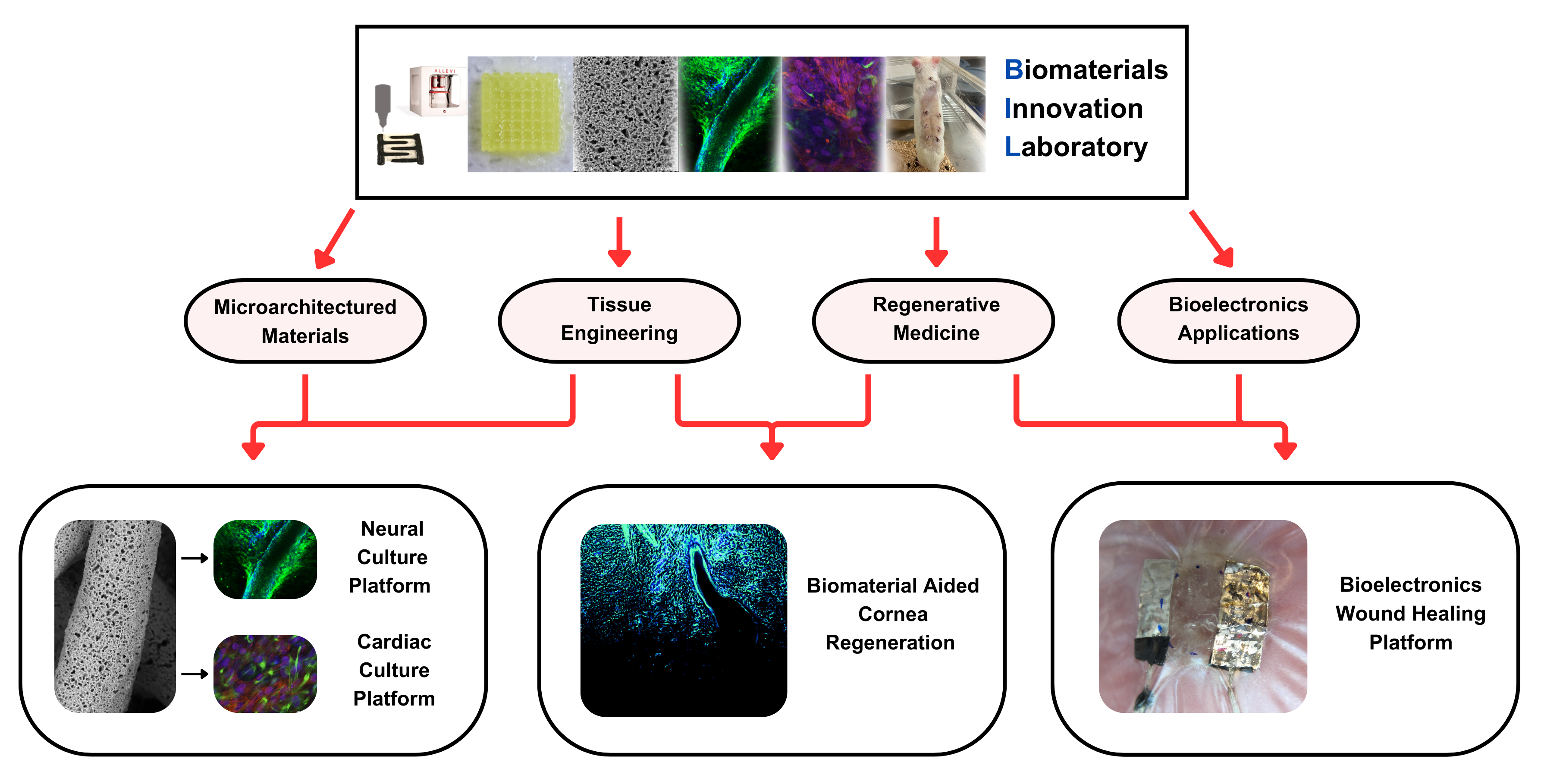Biomaterials Innovation Laboratory
Our Research
At the Biomaterials Innovation Laboratory, we have 4 primary research focuses: microarchitectured materials, tissue engineering, regenerative medicine, and bioelectronics applications. Look below to learn more.
Our Research Interest
-
Microstructured Materials
The microstructure of biomaterials plays a pivotal role in tissue engineering by influencing cell behavior, tissue formation, and scaffold functionality. It provides a framework for cell adhesion, guides tissue organization, and, if effectively designed, can facilitate diffusion and nutrient transport. By mimicking the extracellular matrix, microstructures can enhance cell differentiation, promote vascularization, and ensure mechanical integrity. We are specifically interested in creating biomaterials with interconnected porosity and bicontinous structures.
-
Tissue Engineering
Tissue engineering is a bioengineering field that uses a combination of cells, scaffolds, and other materials to create artificial tissues. These tissues can have applications in regenerative medicine, in-vitro disease modeling, and in vitro drug testing. The 3 main factors involved in tissue engineering are cells, biomaterial scaffolds, and biological factors. We work on advancements in the design of the biomaterial scaffolds themselves and identifying novel solutions to load and release biological factors.
-
Regenerative Medicine
Regenerative medicine is a branch of medical science focused on repairing, replacing, or regenerating damaged or diseased tissues to restore normal function. It uses a combination of approaches, including stem cell therapy, tissue engineering, and the use of biomaterials to help facilitate this healing process. We specifically focus on biomaterials and tissue engineering solutions for regenerative medicine. Currently, our specific interests are in targeting neurodegenerative diseases such as Parkinsons.
-
Bioelectronics Application
Bioelectronics is an interdisciplinary field that merges biology and electronics to develop devices and systems that interface with biological systems for sensing, monitoring, and stimulating biological processes. It involves the integration of electronic components with biological systems, such as tissues interfacing with electrical systems. Within the field of bioelectronics, there is interest in the development of fully biodegradable systems. Our previous work has been on developing biodegradable energy storage solutions, while our current interests are in developing interface solutions between a bioelectronic system and the tissue.
